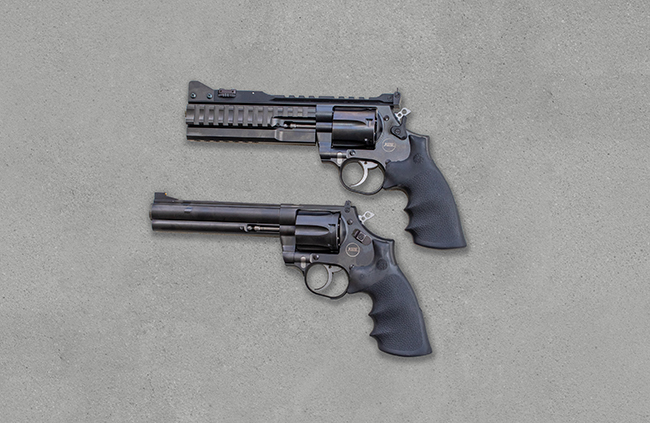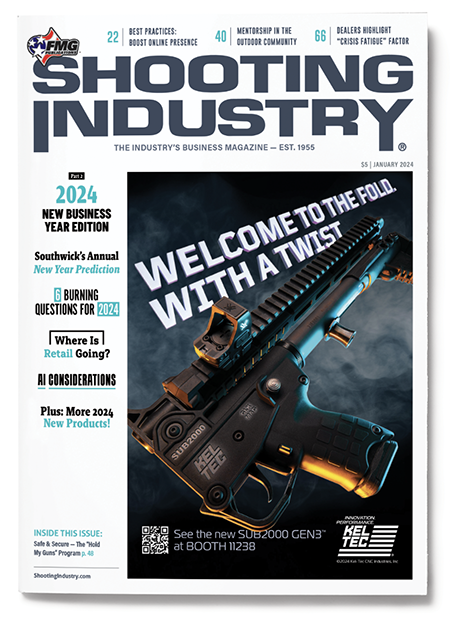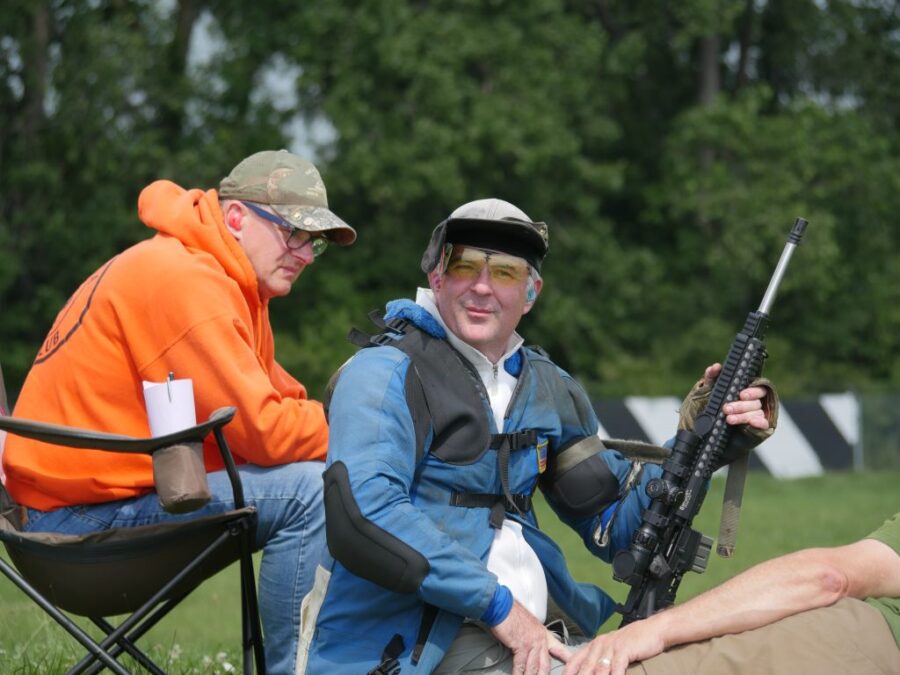Selling Premium-Priced
Defense Guns
Let’s recognize at the outset: except for boutique gun shops catering exclusively to the “carriage trade,” premium-priced guns aren’t the bread and butter of most retail firearms dealerships. However, the profits per sale are substantial and should not be ignored. And here’s why.
Prestige Value
For some customers, certainly, the prestige value is the selling point. I grew up in a family jewelry store. A corner of the showcase had some low-priced watches, but most were more expensive. We had a lot of doctors, lawyers and executives buying high-priced timepieces.
The fact was a Rolex didn’t keep time better than a Seiko or even a Timex. The Patek Phillipe wasn’t bought to know what time it was, it was bought to show the world the owner had arrived, so to speak — and it reminded the owner of this reassuring fact whenever he or she wanted to know what time it was.
With prestige guns, there’s something similar, particularly when the customer shoots in competition or just plinks with friends often — or simply likes to show off his collection. After all, a prestige handgun is carried concealed just like an ordinary GLOCK or SIG and is not an avatar of “conspicuous consumption.”
Much of the value of a high-priced defensive handgun is in the customer knowing he or she has paid the price to protect themselves and their family with the best possible equipment.
Objective & Subjective Factors
Let me tell you a short story. Back in the 1970s, I was the feature editor for a series of regional police professional journals. One of them was done for the association that represented the state troopers of Colorado. Back then, the typical police patrol car was a plain Jane Ford, Chevrolet or Plymouth — the traditional “low-priced cars” of the time.
Similarly, the duty .357 Magnum service revolver of a state trooper was likely to be a Smith & Wesson Combat Magnum or Highway Patrolman model, or a Colt Trooper. I noticed, however, the Colorado State Patrol ensconced their troopers in so-called “medium-priced” cars: Buick, Oldsmobile or equivalent. Likewise, their standard-issue service revolver was the premium-grade Colt Python.
The reasons, I was told, were comfort and confidence. As to the vehicles, the patrol car was the trooper’s “office” for at least eight hours a day, and their commanders wisely wanted them to be as comfortable as possible for an all-weather climate.
As to the guns, high command knew the troopers patrolled solo and would likely be alone when they needed their sidearm to stay alive, and they wanted the troops to know they had been provided with the best equipment available for this purpose.
You don’t see this line of thinking much in institutional environments, but you see it more with the individuals who come into your shop. Hold this thought: first, “The Best That Can Be Had,” and second, comfort and performance factors.
Examples In Individual Sales
For the customers who have the discretionary income to afford it, there is something reassuring in being able to say, “I bought the best there is to protect my family.”
To return to the automobile analogy, one reason many people pay more for a Volvo or a Subaru than for an economy car is those brands advertise their crash-worthiness and the fact they’re engineered to keep their precious cargo safe when bad things happen. There’s some of this going on in the minds of your customers when they come to you to buy defensive firearms.
This brings us to “signature model” guns from boutique manufacturers. Ed Brown Custom developed the policy of sometimes doing a one-year production run of a 1911 pistol with features specified by gun experts who had earned a reputation. When a customer bought the Jeff Cooper or Jim Wilson or other signature model, they knew it had been shaped by the experiences of an expert they trusted, and this gave them a little more confidence in what they were carrying. The same is true of a Ken Hackathorn Special from Wilson Combat or a Clint Smith-inspired Thunder Ranch Special from more than one custom maker.
When Ed Brown did the Massad Ayoob Signature Edition, I was gratified at how many purchasers I met — some of whom told me they bought the gun before they met me, and some of whom did so after training with me — because the round butt, Commander-size .45 had the attributes they wanted for personal protection.
But endorsements from subject matter experts are far from the main reason customers want these top-line guns.
What sells them is performance.
Performance-Enhancing Attributes
The customer buying a defensive firearm has visualized themselves having to use it in a life-or-death situation. If the expensive gun gives them an edge they wouldn’t have had otherwise, it’s not just a selling point but a genuine potential life-saver.
You sell Smith & Wessons? You know the higher-priced Performance Center series is advertised to come with smoother triggers for better shooting at speed, and in some of the revolvers with recoil-reducing gas ports which can increase the rate of accurate rapid fire. This is just one example.
A couple of years ago, I acquired a Langdon Tactical Technologies custom Beretta 92G, complete with a Trijicon SRO optical sight. Now, I’ve accumulated 10 or a dozen Beretta 92 series pistols and they are all excellent defensive weapons, but when I compete with a Beretta it’s usually with a full-size Langdon because it simply shoots better for me. When I carry a Beretta it’s usually one of my two Wilson Combat 92 Compacts, because I’m a compact-size person. They all shoot better for me than the same brand out of the standard factory box.
Why do “boutique” 1911 carry guns sell for $3,000? Because in standard production you can get 1″ to 1.5″ groups or consistent reliability in adverse circumstances, but not both … and in a Wilson Combat, Ed Brown, Nighthawk, etc. you do get both!
In the premium-priced AR-15 rifles, it’s the same thing: the high-priced guns combine accuracy with certain reliability — thus creating confidence. And confidence intertwines with competence.
For the customer to pay more, he or she needs to understand the value that accompanies the price tag. If the gun lets the customer shoot better, it’s another value-increasing element to overcome a higher price.
Tell the average customer, “For $1,500 more I can sell you this one that will group an inch or two tighter.” He’ll probably answer, “That juice ain’t worth the squeeze.” But … for your customer who is gunning for the next State Champion title, it could be worth every penny extra.
A closing sales tip: Remind the customer if he keeps a $3,000 gun for 30 years it will still be worth a lot at the end of time, and it will have cost him about 30 cents a day to own it.
Now, challenge yourself in the new year to sell more premium-priced options!





